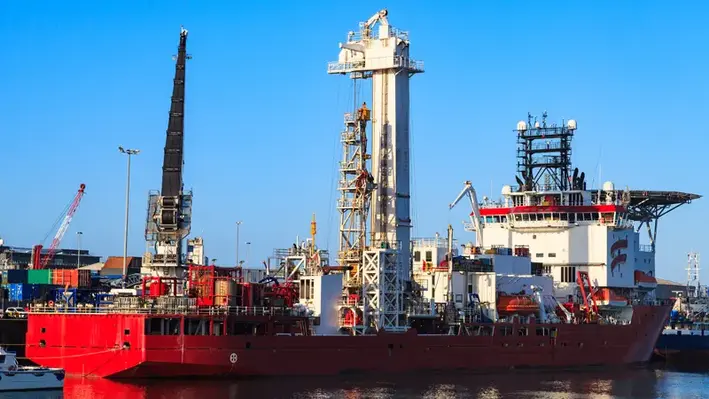
 A technical hiccup in the Bauna floating production storage and offloading (FPSO) vessel deployed in the Santos Basin offshore Brazil has cost exploration and production company, Karoon Energy, about 10 days of production shut in, resulting in 4% lower yeild in the fourth quarter of 2024, when compared to the previous quarter.
A technical hiccup in the Bauna floating production storage and offloading (FPSO) vessel deployed in the Santos Basin offshore Brazil has cost exploration and production company, Karoon Energy, about 10 days of production shut in, resulting in 4% lower yeild in the fourth quarter of 2024, when compared to the previous quarter.
This was triggered by the failure of two of the 16 FPSO mooring anchor chains, which is currently being addressed by Karoon and the FPSO operator, Altera & Ocyan (A&O), as the team tries to figure out the root cause behind the failure and identify ways to mitigate the risks of recurrence. Karoon is considering acquiring the FPSO for a smoother monitoring of the vessel, and is in talks with A&O to gauge the feasability of the plan.
"Longer term, given the significance of the FPSO to our operations, we see measurable operational and economic advantages in having direct control over the vessel. The company is in negotiations to acquire the FPSO from the current owner and operator, A&O, subject to finalising terms. Further details will be provided if and when a binding agreement is reached," said Julian Fowles, the Chief Executive Officer and Managing Director of Karoon.
Achieving around 95% FPSO efficiency has also been a roadblock for Karoon as it remained low by atleast a 10% for 2024. To boost performance reliability, Karoon will soon be initiating a flotel-supported maintenance campaign on the vessel following the acquisition of relevant regulatory approvals. This floating hotel moored by the FPSO has been contracted to accommodate extra
manpower for a planned maintenance programme to methodically eliminate maintenance backlog so that equipment redundancy on the FPSO can be attained. The entire campaign might span across a period of two months, requiring the FPSO to remain non operational for at least 30 days. The company is expecting the Bauna FPSO to attain monthly efficiency of 88-92% (excluding shutdowns) in this year.
"While the Bauna Project production is starting to benefit from the work completed to clear the most production-critical maintenance issues, FPSO efficiency in CY24 was 84.5%, well below our long term expectations of 90-95%. A key focus in 2025 will be to increase FPSO efficiency towards that goal. The first step, a flotel-supported campaign to substantially reduce the maintenance backlog and improve equipment redundancy, is expected to commence shortly, once remaining regulatory approvals are received," said Fowles.
Karoon has also secured a vessel to conduct well intervention activities in SPS-88 in Bauna within the first half of the year so that it can be brought back onstream before mid-year. Fowles believes this to be a crucial step, alongside the flotel-supported maintenance campaign, in 'the reinstatement of production from SPS-88, which we expect back online at rates of 2,000 – 2,500 bopd before mid-year, is expected to help mitigate natural decline in 2025'.
A lightweight well intervention vessel will be deployed to replace the faulty gas lift valve in the SPS-88 completion string. The relevant approvals and necessary support vessels have been put in place for the intervention activities to begin.
To know more about the global well intervention scene, click here.
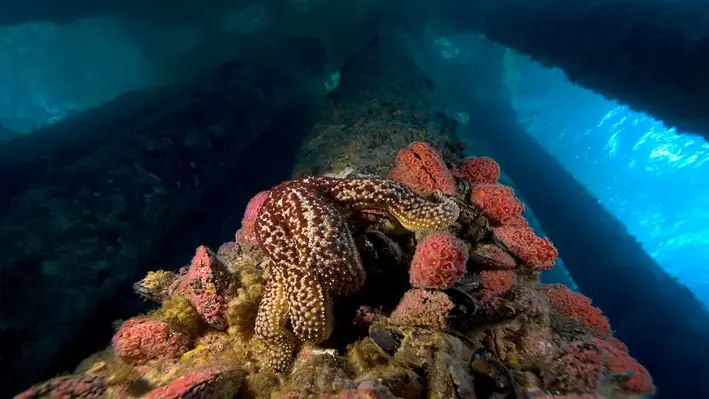
 A recent report by the Australian Academy of Technological Science and Engineering on offshore oil and gas decommissioning highlights technologies that can facilitate alternative uses for in situ decommissioned platforms.
A recent report by the Australian Academy of Technological Science and Engineering on offshore oil and gas decommissioning highlights technologies that can facilitate alternative uses for in situ decommissioned platforms.
As the report points out, in situ decommissioning and repurposing of infrastructure can preserve marine ecosystems, reduce decommissioning requirements, and mitigate the risks of transporting invasive species. Such alternative uses can include rigs-to-reefs, commercial fishing, tourism, maritime logistics, alternative energies, coastal surveillance and research. Some of these approaches are already being used or planned in the Gulf of America. However, it is important to ensure that legal and regulatory issues, as well as technical challenges such as preserving structural integrity, are adequately addressed to ensure the long-term viability of repurposed assets.
Infrastructure that is intended to be repurposed will need to be prepared accordingly, assuming all the regulatory approvals have been obtained, to include ensuring integrity of the structure, removing or containing any contaminants to ensure there are no leaks throughout the lifespan of the repurposed facility, and continuous monitoring to mitigate against any ongoing risks.
Measures can include geotextile wrapping to protect against corrosion and guard against potential contaminant release; and stabilisation and encapsulation of contaminants to ensure their long-term containment and prevent leakage.
As would have been the case with the original facility, ensuring integrity of the repurposed structure for its proposed lifespan will be crucial. Approaches can include reinforcing infrastructure such as concrete and steel to boost structural integrity and extend lifespan, particularly where re-use purposes require topside refurbishing with heavy equipment; advanced anti-corrosion coatings and treatments; and capping and plugging for long-term well integrity.
Continuous monitoring of the infrastructure itself as well as the sea and ecosystem surrounding it is crucial to preserve the local marine environment. Here, autonomous systems and sensor technologies capable of providing real-time data to facilitate prompt remediation when necessary can come into play. Miniaturised sensors using nanotechnology dispersed throughout the marine environment can collect data on various parameters such as water quality, pollutants, and biological indicators. Genetically engineered microorganisms or synthetic biological systems could be designed to detect specific pollutants or environmental changes in real-time.
Advanced machine learning algorithms could be integrated into monitoring systems to analyse vast amounts of data and identify anomalies that could indicate environmental disturbances or hazards. These algorithms would continuously learn from historical data and real-time observations to improve their accuracy in detecting abnormal conditions and trigger alerts.
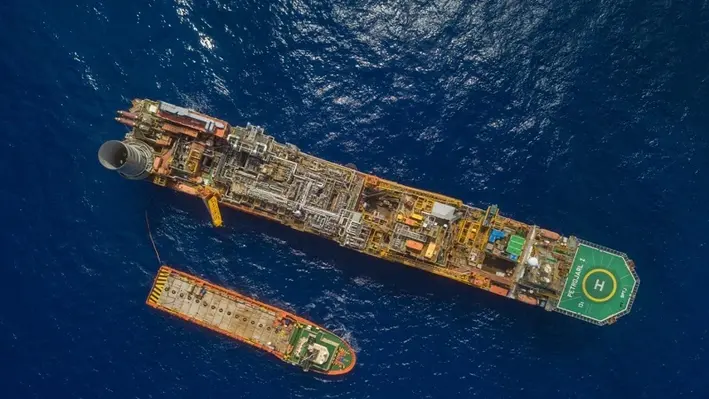
 Amplus Energy Services has acquired the Petrojarl I vessel, marking a significant milestone in the company’s market position.
Amplus Energy Services has acquired the Petrojarl I vessel, marking a significant milestone in the company’s market position.
The purpose-built FPSO unit is renowned as one of the most versatile and widely deported FPSOs in history. Amplus has acquired the Petrojarl I from UK-based Altera Infrastructure. Fully classes, the vessel has recently completed a successful deployment in Brazil.
Notably, this acquisition marks Amplus’ initial vessel ownership, positioning the company to expand its strategy and meet growing market demands. To date, Amplus has focused on delivering innovative field development solutions, offering vessel design and leasing options over direct ownership.
Steve Gardyne, Managing Director at Amplus, said, “This vessel is unquestionably the most flexible and most deployed FPSO in history – and Amplus now has the opportunity to apply our experience and approach to steward it safely and successfully for years to come. The addition of this vessel strengthens our ability to meet growing market demands and ensure we are well-positioned to address client needs.”
Petrojarl I is available for deployment in early production system applications, extended well tests and standalone marginal field developments. Additionally, the vessel is ideal for cost-effective, lower-prediction operations and can support both early-phase and tail-phase production.
Ian Herd, Executive Director, commented, “There is a market opportunity for a trusted, entrepreneurial FPSO contractor operating at the flexible, niche end of the spectrum offering fit-for-purpose vessels at a very competitive price, backed up by a leadership team with extensive operator experience supported by a scalable and aligned set of subcontractors.
“The acquisition marks a significant advancement for Amplus Energy and we look forward to meeting the evolving needs of the industry.”
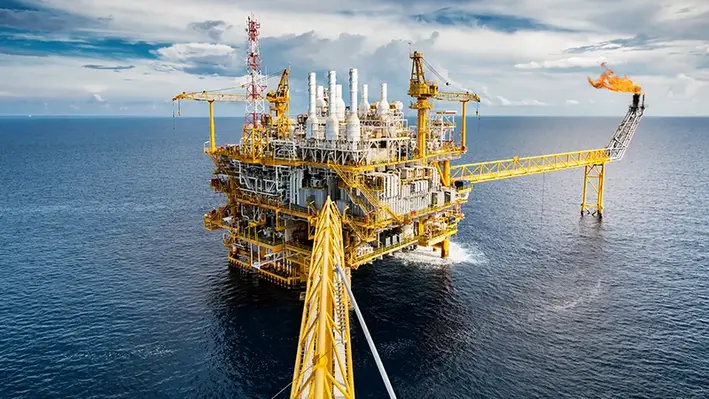
 The offshore well intervention market in the Asia-Pacific region is experiencing steady growth, driven by increasing investments in oilfield optimisation and advanced intervention technologies.
The offshore well intervention market in the Asia-Pacific region is experiencing steady growth, driven by increasing investments in oilfield optimisation and advanced intervention technologies.
According to a report by Future Market Insights (FMI), the global downhole tractor market is expected to expand from US$4,033.6mn in 2025 to US 7,088.4mn by 2035, at a 5.8% CAGR.
Rising demand for downhole tractors
The growing complexity of offshore drilling operations in the region has heightened demand for downhole tractors, particularly in deepwater and horizontal well applications. Countries like China, Australia, and Malaysia are leading investments in offshore exploration, requiring efficient well-intervention solutions.
Technological advancements driving growth
Technological advancements, such as real-time monitoring and AI-driven automation, are enhancing the efficiency of downhole tractors. "The growing need for efficient well intervention and technological advancements will continue to drive the downhole tractor market’s expansion. The increasing application of these tools in complex drilling operations and emerging oilfields, especially in key regions, positions the market for sustained growth over the next decade," said Nikhil Kaitwade, Associate Vice President at Future Market Insights (FMI).
With increased investment in offshore well optimization, the Asia-Pacific region is poised to play a critical role in shaping the future of downhole intervention technologies.
For more insights please visit here

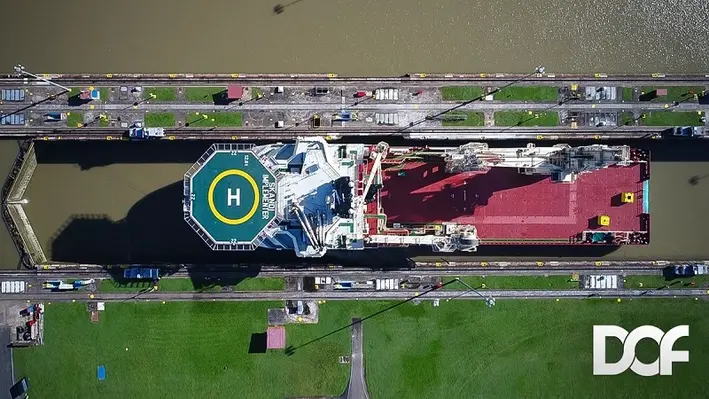 DOF Group ASA has announced two more contracts for subsea projects for two international companies in the Gulf of Mexico.
DOF Group ASA has announced two more contracts for subsea projects for two international companies in the Gulf of Mexico.
Skandi Implementer, which has recently departed Mexico due to a contract termination, will be deployed for the projects. Overall the projects’ expected duration is approximately two months.
The vessel will complete the integration of survey services and two of DOF’s remotely operated vehicles (ROVs).
Mons Aase, CEO of DOF Group ASA, said, “We are pleased to be able to quickly secure work for Skandi Implementer following the recent contract termination. Beyond contributing with asset utilisation and backlog, these contract awards represent advancing another of our I-class vessels into our subsea project business in line with our plan to add subsea service scopes to our most recent additions to the fleet.”
The Skandi Implementer was designed for subsea construction, inspection, repair and maintenance (IRM) and ROV services up to 3,000m of depth.
Earlier this month DOF Group also announced the acquisition of two subsea contracts in the APAC region for work offshore Malaysia and Indonesia.
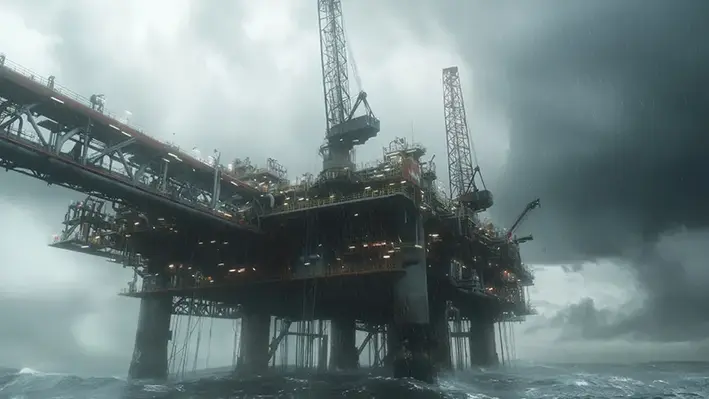

A recent report by Macquarie University’s Centre for Energy and Natural Resources Innovation highlights a pressing issue regarding how the structural integrity and failure risks that come with offshore wells that are suspended, plugged or abandoned tend to be severely underestimated.
Wells that are not appropriately abandoned can pose a serious threat to the health of neighboring countries and the environment. Inadequate plugging can also result in excessive emission of methane, contributing to climate change. Moreover, leaks and operational issues can make them a significant safety hazard.
The report highlighted six recommended best practices and regulatory reforms that would be useful for handling plugged and abandoned oil and gas wells. Upon its launch, professor of Energy and Resources Law at Macquarie and writer of the report, Tina Soliman-Hunter, in collaboration with the members of the Maritime Union of Australia (MUA) urged the need to strengthen the regulatory framework for end-of-life offshore oil and gas assets.
CODA's forecast emphasised that around 51% of Australia's on- and offshore decommissioning liability will occur before 2030, with 23% occuring between 2031 and 2040. This liability considers the removal of offshore material, most of which comprises steel and concrete. The removal of a majority of offshore infrastructure material would depend on NOPSEMA requirements.
According to an article by Petroleum Australia, deputy leader of the Victorian Greens and Member of the Victorian Legislative Council, Sarah Mansfield stated that nearly 150,000 tonnes of methane were being emmitted by just a handful of surveyed sites each year. She also initiated the inquiry into abandoned and plugged wells, given Victoria's gradual transition towards renewables.
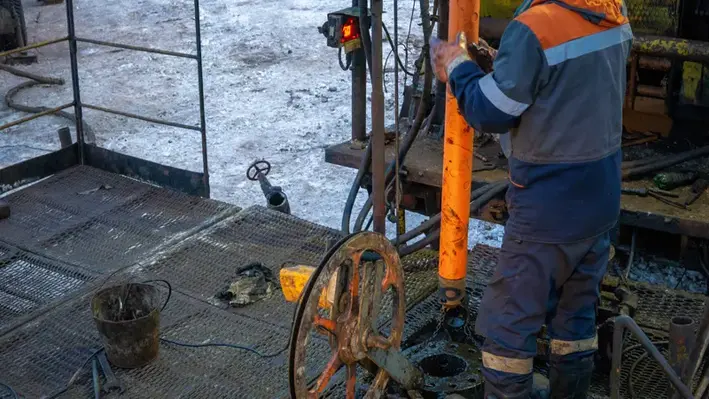
 A United States-based oilfield technology company called Deep Well Services stepped into the United Arab Emirates with its acquisition by Enersol, a joint venture comprising ADNOC Drilling Company and Alpha Dhabi Holding.
A United States-based oilfield technology company called Deep Well Services stepped into the United Arab Emirates with its acquisition by Enersol, a joint venture comprising ADNOC Drilling Company and Alpha Dhabi Holding.
DWS, through Enersol, will drive the development of the UAE’s conventional and unconventional energy resources. Its contribution, alongside other Enersol companies, will add the technological support necessary to deliver ADNOC Drilling’s US$1.7bn worth of contract that involves leveraging 144 unconventional wells.
Established in 2008, DWS is known for its advanced technology services within the energy sector. Its patented Hydraulic Completion Units (HCU) are designed for high-pressure, long lateral, and multi-well completion operations, enabled by its data analytics software, BoreSite. The HCUs are also known for tackling workover of laterals, multi-well pads, high-pressure operations, and complex fishing programmes.
The company's other patented offering is the data acquisition system (DAS), BoreSite, which can allow operators to attain production optimisation by leveraging vast data sets into actionable insights for them. Its live feed reflects operations condition in real-time, which can be monitored and gauged remotely to make prompt corrections if required.
DWS' blowout preventers that are manufactured in the US with an API 16A & 6A certification are available in 10k and 15k pressure ratings. These, along with its range of accumulators, assures reliable well control and traceability for wellbore intervention activities.
The blowout preventers feature:
The company's pressure management services offer a compact and mobile 5000 psi hot tap drill to release trapped pressure by exercising caution and following all safety protocols. It is equipped with the necessary tools from casing valves to drill pipes for operators to get their production back online.
The company also covers training and development, offering globally accredited programmes with a special focus on operational safety and efficiency. It also assists in automating flowback operations via a joint venture called AutoSep Technologies. Besides its vast experience across multiple basins in North America, DWS has served more than 70 E&P companies that include both small-private operators and large-cap national energy companies.
Enersol has acquired a 95% stake in DWS at approximately US$223mn, including performance-based payments, subject to necessary regulatory approvals and other customary conditions precedent. The joint venture reflects ADNOC Group's readiness to adopt advanced oilfield technologies to maintain the Middle East's relevance in today's oil and gas industry. DWS has been the venture's fourth acquisition in 2024, following agreements to take over a downhole visual analytics company called EV; acquire 51% interests in NTS Amega, a manufacturer of advanced precision equipment and solutions provider for the energy sector, and a 67% stake in US-based Gordon Technologies that offer measurement while drilling services.
These acquisition strategies aim to build a next-generation technology portfolio with the scope to expand its presence in a previously untapped yet dynamic market.
To know more about the global well intervention scene click here.
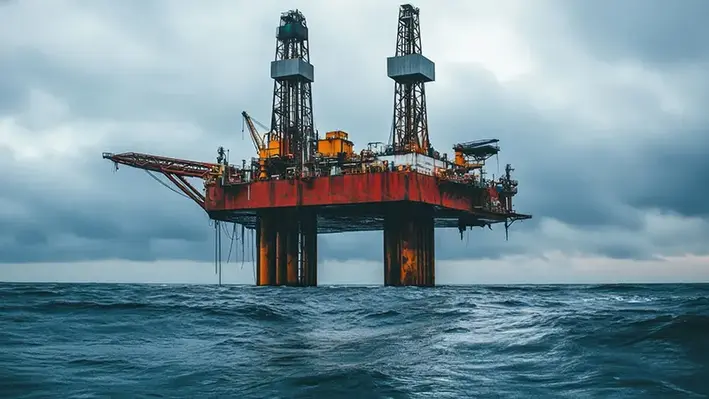
 The UK’s North Sea Transitions Authority (NSTA) has highlighted the role of new technologies in making P&A operations more efficient and cost-effective, and the potential of the UKCS as a test bed for pioneering P&A technologies which could be rolled out in other basins, such as the Gulf of America.
The UK’s North Sea Transitions Authority (NSTA) has highlighted the role of new technologies in making P&A operations more efficient and cost-effective, and the potential of the UKCS as a test bed for pioneering P&A technologies which could be rolled out in other basins, such as the Gulf of America.
Nowhere is the need for new technologies to improve operations more acute than the Gulf of America, given that around 2,300 non-producing wells are scheduled for plugging and abandonment by this year, with decommissioning costs forecast at between US$40-US$50bn and environmental compliance expenses continuing to grow.
In the NSTA Technology Survey and Insights 2024, which raises awareness of solutions and approaches operators are using in the UKCS, the NSTA highlights that Well P&A, the most expensive part of the decommissioning process, is a field of active innovation, driven by both vendors and operators and including through-tubing logging, barrier placement, and downhole wireless sensing.
It highlights that there has been progress in introducing novel barrier materials and deployment techniques, and tools for removing control lines from downhole gauges. It notes that modular workover rigs for platforms and light well intervention vessels for subsea abandonments can lower P&A costs when compared to the use of standard rigs.
In the area of well inspection and cement condition, there are several emerging technologies including multi string logging for barrier verification and assessing cement quality behind the production casing.
There are several examples of conductor cutting techniques reported in the survey, with one operator confirming deployment of a combined hydraulic cutting tool with a pinning tool to allow combined cutting and pinning operations.
In the area of barrier placement and verification, operators are using deployable technologies such as through tubing abandonment, ongoing field trialling of non-alloy barriers, fusion-based alloy plugs, and suspended well abandonment tools for rigless abandonment using lower cost vessels. One operator plans to use self-healing cement to incorporate downhole gauge cables which prevent effective plug setting. Emerging technology is being progressed through trials of novel abandonment techniques.
Operators are considering light well intervention vessels for subsea open-water abandonments and subsea shut-off devices for open-water tubing retrieval. Emerging technology includes novel approaches for breaking the cement bonds on casing strings, with the swarf recovery unit and a casing recovery system being new developments.
The survey also highlights the use of innovative solutions for improving well access for interventions, low-cost platform workover rigs/modular drilling rig systems, rigs specifically configured for well P&A, and riserless P&A systems. The latest innovations include an inside casing status visualisation technology, subsea vessel based fishing tools and a casing expander tool.

 Brunei Shell Petroleum (BSP) has awarded Serikandi Hilong Sdn Bhd, a joint venture between Serikandi Oilfield Services (Serikandi) and Hilong Marine Engineering (Hilong), a significant contract for decommissioning services offshore Brunei.
Brunei Shell Petroleum (BSP) has awarded Serikandi Hilong Sdn Bhd, a joint venture between Serikandi Oilfield Services (Serikandi) and Hilong Marine Engineering (Hilong), a significant contract for decommissioning services offshore Brunei.
In a LinkedIn article published by the consortium, the contract is for the Engineering, Preparation, Removal and Disposal (ERRD) of redundant structures. Serikandi says the project “prioritises resource reclamation, ecosystem revitalisation, and economic growth aligning with global sustainability goals.”
Serikandi states the that by leveraging its local expertise with Hilong’s technology proficiency, the collaboration will deliver safe, efficient and environmentally responsible decommissioning services.
Revi Bhaskaran, CEO of Serikandi Group, said, “This milestone reflects our commitment to environmental preservation and operational excellence. Collaborating with Hilong enables us to expand our capabilities while supporting regional decommissioning expertise.”
Jeffery Gu, Executive Deputy President of Hilong Group, commented, “We are honoured to contribute to Brunei’s first major decommissioning project. Together with Serikandi, we will ensure successful delivery while upholding the highest safety and environmental standards.”
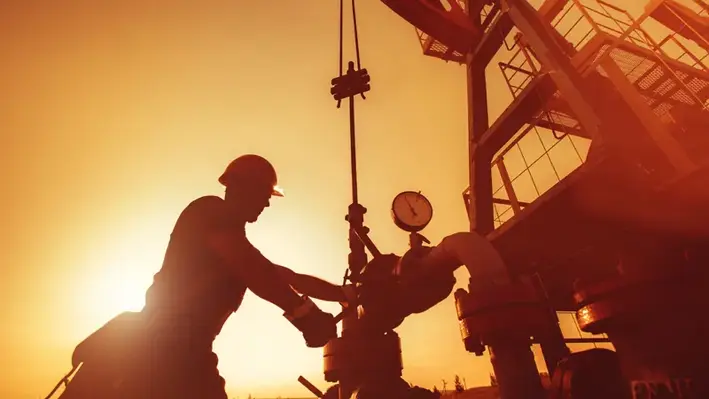
 Following 2024's extensive eight-well production drilling campaign in the Dussafu Marin permit offshore Gabon, operator BW Energy and partner Panoro Energy have managed to hit their production targets of 40,000 barrels of oil per day (bopd) in November 2024, and has remained consistent since.
Following 2024's extensive eight-well production drilling campaign in the Dussafu Marin permit offshore Gabon, operator BW Energy and partner Panoro Energy have managed to hit their production targets of 40,000 barrels of oil per day (bopd) in November 2024, and has remained consistent since.
This was made possible by a robust workover and electrical submersible pump replacement programme with the help of Borr Drilling's Norve jack-up rig. An effective artificial lifet method, ESPs help pump production fluids from low pressure situations. It is easy to maintain, and is considered a cost effective alternative to vertical turbine, split case and positive displacement pumps.
At approximately 37,153 bopd in the fourth quarter of 2024, the site crossed a milestone as it was the highest quarterly rate achieved since 2018, when the block first started producing.
The current production rate might jump by another 10%, given the scope for the FPSO nameplate capacity to reach beyond 40,000 bopd.
After the 2024 production campaign concluded in October, with the installation of a conventional electrical submersible pump (ESP) system for the DHIBM-7H well as it was brought online, the rest of the seven Hibiscus / Ruche production wells also underwent a workover and ESP replacement programme in January this year.
According to Panoro Energy's Chief Executive Officer, John Hamilton, the Dussafu drilling campaign was expanded to eight wells in order to accomodate first track development of the final two discoveries made in May 2024.
“Our current focus is on fully transitioning all the new wells to conventional ESP systems and restoring production at the three shut-in wells, after which we will drill the exciting Bourdon prospect in line with our infrastructure lead exploration and appraisal strategy aimed at unlocking the substantial organic upside that exists on the block,” said Hamilton, while speaking on the drilling campaign.
As part of its 2025-26 programme in Gabon, Borr Jack-Up XIV Inc will be deployed by Vaalco Energy for the drilling of multiple development wells and appraisal/exploration wells.
"We are excited about the major projects planned for 2025 that are expected to deliver a step-change in organic growth across our portfolio in the coming years. In Gabon, we continue to work with our joint owners at Etame on our shared goal of executing another successful drilling campaign designed to enhance production and add reserves. We have signed a contract with Borr that we believe allows us the flexibility to optimise our drilling and workover plans offshore Gabon.
“We anticipate the programme to begin in mid-2025 with the sequencing and exact number of wells yet to be finalised. We are planning on multiple wells in the Etame field, multiple wells at our SEENT platform and a redrill and several workovers in the Ebouri field to access production and reserves that were previously shut in and removed from proved reserves due to H2S. Over the past three years, we have delivered on our focused strategy and believe we will continue to do so with the organic growth programmes across our diversified portfolio over the coming years,” said George Maxwell, the Chief Executive Officer of Vaalco Energy.
To know more about Africa's well intervention scene, click here.
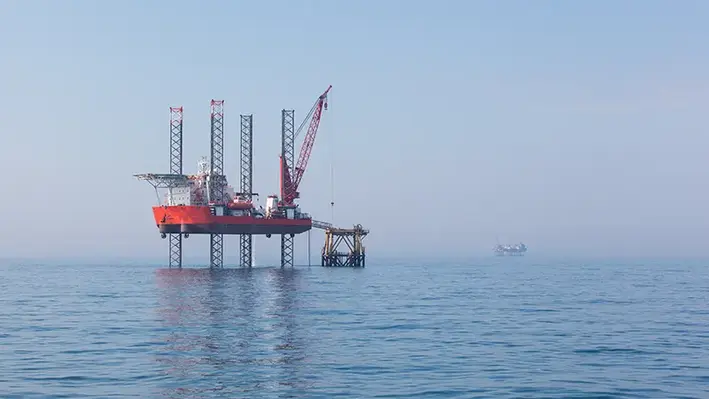
 Global law firm Clifford Chance has provided its feedback on Australia’s recently-published roadmap for decommissioning, calling the blueprint a welcome development but one that needs "tangible" support to ensure success.
Global law firm Clifford Chance has provided its feedback on Australia’s recently-published roadmap for decommissioning, calling the blueprint a welcome development but one that needs "tangible" support to ensure success.
In its report – The Road to Decommissioning: Establishing a Global Decommissioning Hub in Australia – it charts the steps Australia plans to make following the release of the government’s long-awaited Offshore Resources Decommissioning Roadmap. In its closing remarks on where to next for the industry, Clifford Chance highlights some of the many opportunities –and challenges –ahead.
"There is significant potential for growth in the Australian decommissioning industry through involvement in upskilling employees, re-purposing existing ports and building facilities that will improve the efficiency of recycling decommissioned materials," it states. "The government's commitment to ensuring Australia is equipped to grow the decommissioning industry is a welcome development, which needs to be matched with tangible actions."
Testimony to Australia's continuing commitment to energy transition, the main objective of the roadmap is to develop a world leading decommissioning hub in Australia. This proposed hub will service global demands, seizing the opportunity to capitalise on the estimated US$60bn spend on decommissioning offshore facilities over the next 30 to 50 years. Among the growth opportunities highlighted by Clifford Chance are prospects for international collaboration. It notes that Australia lacks adequate vessels for engaging in heavy offshore decommissioning and there is also an opportunity for stakeholders to collaborate with other global markets to import machinery. Port modification is also seen as another area of opportunity. No existing Australian port researched by CODA and KPMG has all the required attributes to handle offshore decommissioning, Clifford Chance noted in its report. This means existing ports will need to be modified to host decommissioning.
But ultimately, this is only the beginning of the journey, it adds. "It is clear that the Australian government, and its state counterparts (who must come along this journey), are still in the information-gathering phase of developing the industry, as there has been a recent request for tender by the Department of Industry Science and Resources for technical advice relating to decommissioning.
"It is a long road ahead, but the areas of development highlighted by the government should act as a checklist for interested parties in ensuring that Australia is at the forefront of the decommissioning industry.
"The roadmap is a welcome and significant stepping stone in Australia’s energy transition journey, and in developing and fostering stakeholder engagement on Australia's ambitions to become a global leader in the offshore decommissioning sector. Australia's next step is eagerly awaited."
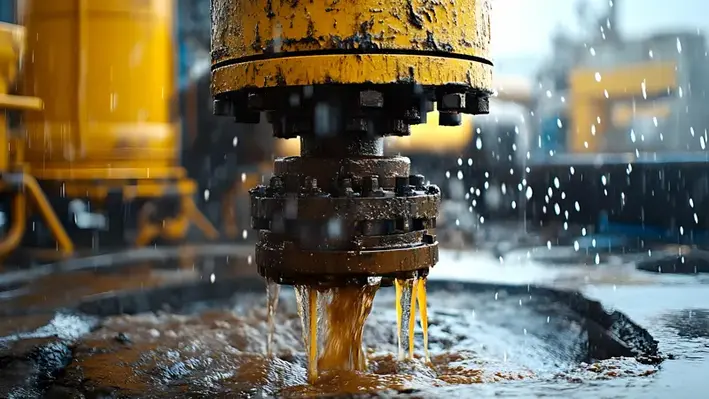
 Following a competitive process, Halliburton has been onboarded by Petrobras for integrated drilling services across several offshore fields in Brazil.
Following a competitive process, Halliburton has been onboarded by Petrobras for integrated drilling services across several offshore fields in Brazil.
Set to begin in 2025, the scope of the contract includes drilling services for development and exploration wells that will continue for a period of three years.
The contract enables Halliburton to provide iCruise intelligent rotary steerable system (RSS) to reduce well time and place wells accurately, and LOGIXTM automation and remote operations platform to improve well construction consistency and performance. The model also covers ultra-deep resistivity service, EarthStar, to position production boreholes and map reservoirs.
The iCruise RSS is known for its fast drilling and tripping time, besides quicker casing drillouts. This model brings predictability to an operator's schedule as it maintains precision of steering capabilities, while reliably reaching total depth, targetting longer wells.
LOGIX is a curation of subsurface and surface automation, digital twins, and remote operations; a one-stop solution for consistent well construction operations. Its wide-ranging advanced digital applications that synchronates design applications, rig control systems, remote operations, and downhole tools, enable critical engineering, operations insights, and automated operations.
The logging-while-drilling (LWD) technology that is EarthStar can interpret reservoir formations and fluid boundaries up to 225 feet (68 meters) around the wellbore. This lets operators position production boreholes accurately while mapping large volumes of the reservoir. Its 3D inversion feature gives subsurface insights in real-time, depicting a vivid image of the geology and fluids in place in three dimensions for better placement decisions.
To address the technical limits of drilling fluids in offshore areas, Halliburton will deploy its BaraLogix real-time service to reduce lost time through advanced hydraulic software, surface measurement automation, and predictive analytics. BaraLogix operates alongside rig sensors to help specialists, drilling engineers, company men, field service representatives, and technical professionals. The tool identifies challenges such as downhole pressure or hole cleaning, and guides the personnel accordingly so as to reduce well construction time. It brings together advanced hydraulic software, surface measurement automation, and predictive analytics, ensuring data accuracy for fool-proof decision making.
The company will also utilise several other exclusive technologies such as Cerebro in-bit sensing and introduce innovative solutions such as the Reservoir Xaminer formation testing service. This service detects structural reservoir complexities and drives more informed decisions in drilling, completion, and production.
Cerebro in-bit sensors help improve drilling efficiency by enhancing bit design, bottom hole assembly and parameter selection. The tool provides in-bit measurements of vibration and rotation speed, forming the basis for advanced bit design, boosting drilling efficiency with a better rate of penetration and run length for a smooth and cost-effective drilling process.
"This contract demonstrates Halliburton’s strength in deep and ultra-deep offshore drilling and well construction," said Waldomiro Mendes, Halliburton's Senior Area Manager for Brazil.
Halliburton considers this its largest service contract with Petrobras, which significantly expands its drilling services footprint in the pre-salt and post-salt areas for both development and exploration wells.
To know more about the global well intervention scene, click here.
Page 32 of 111